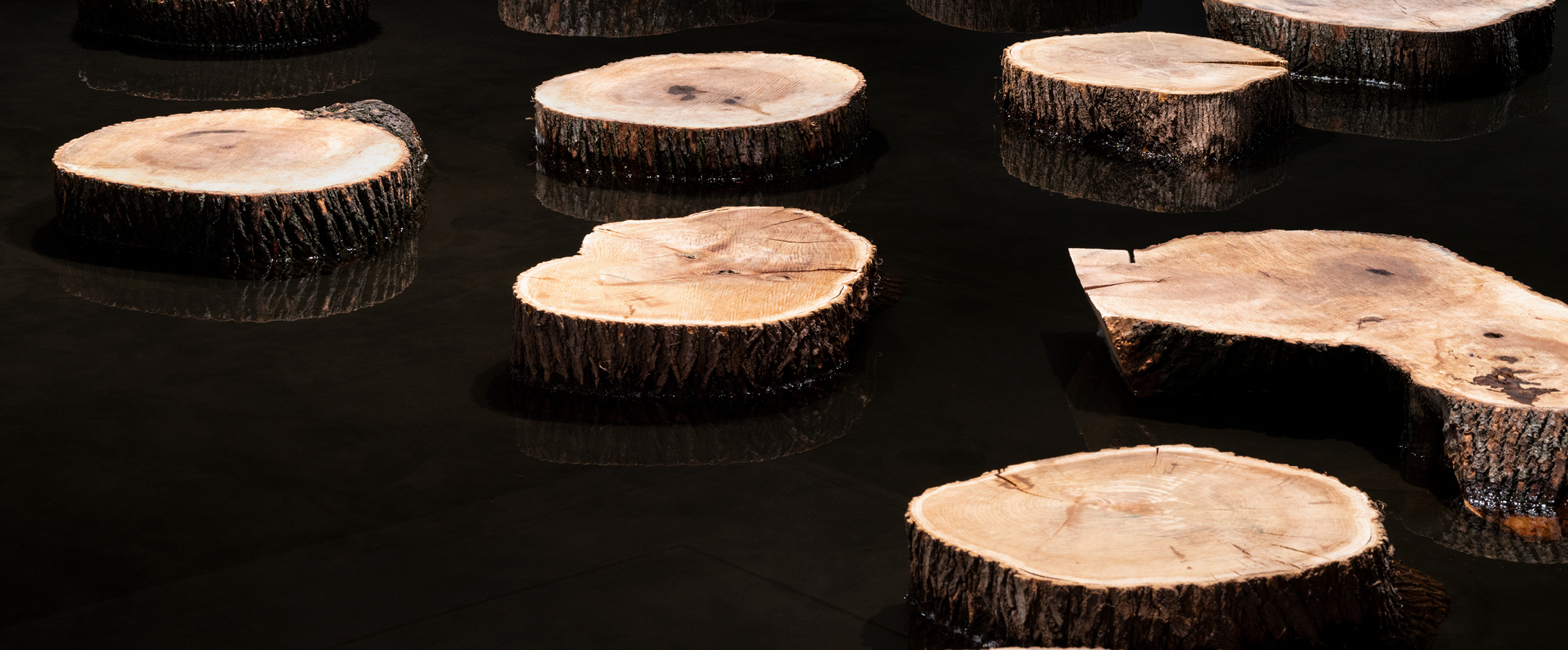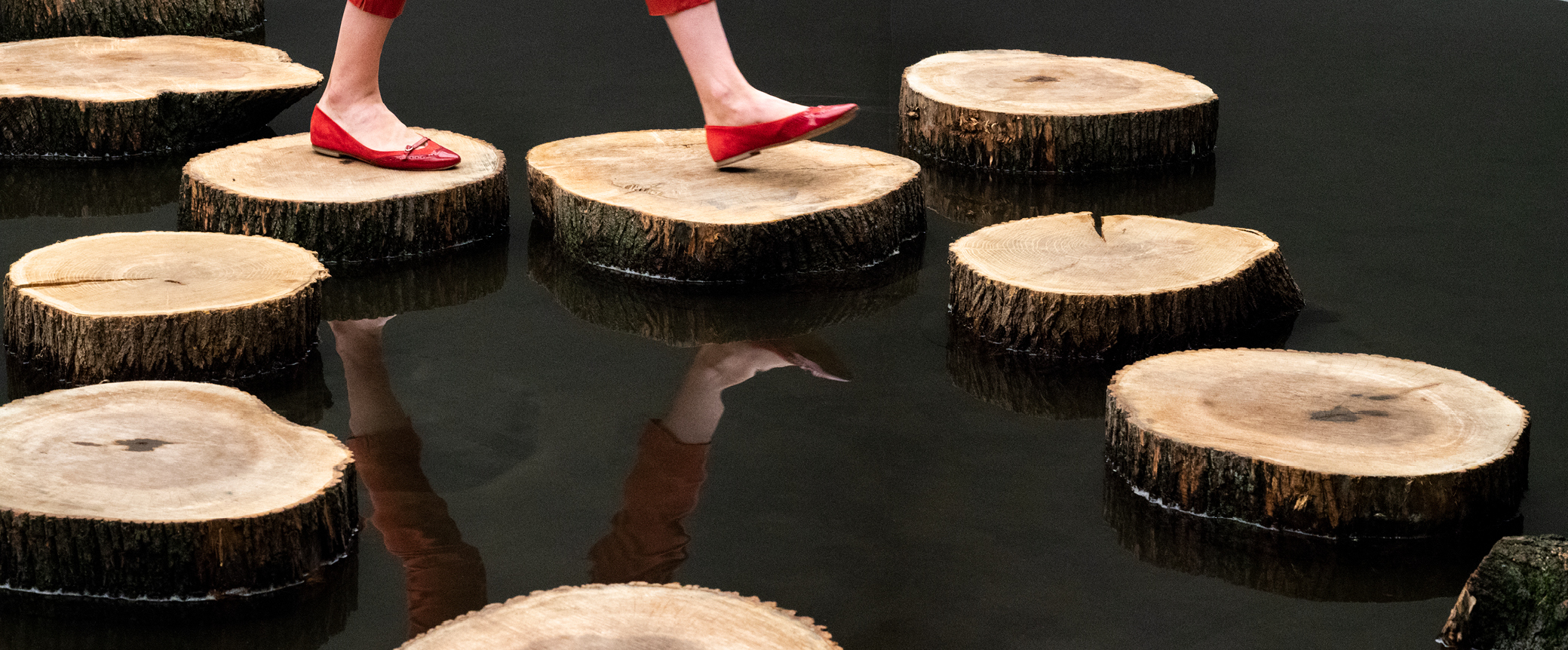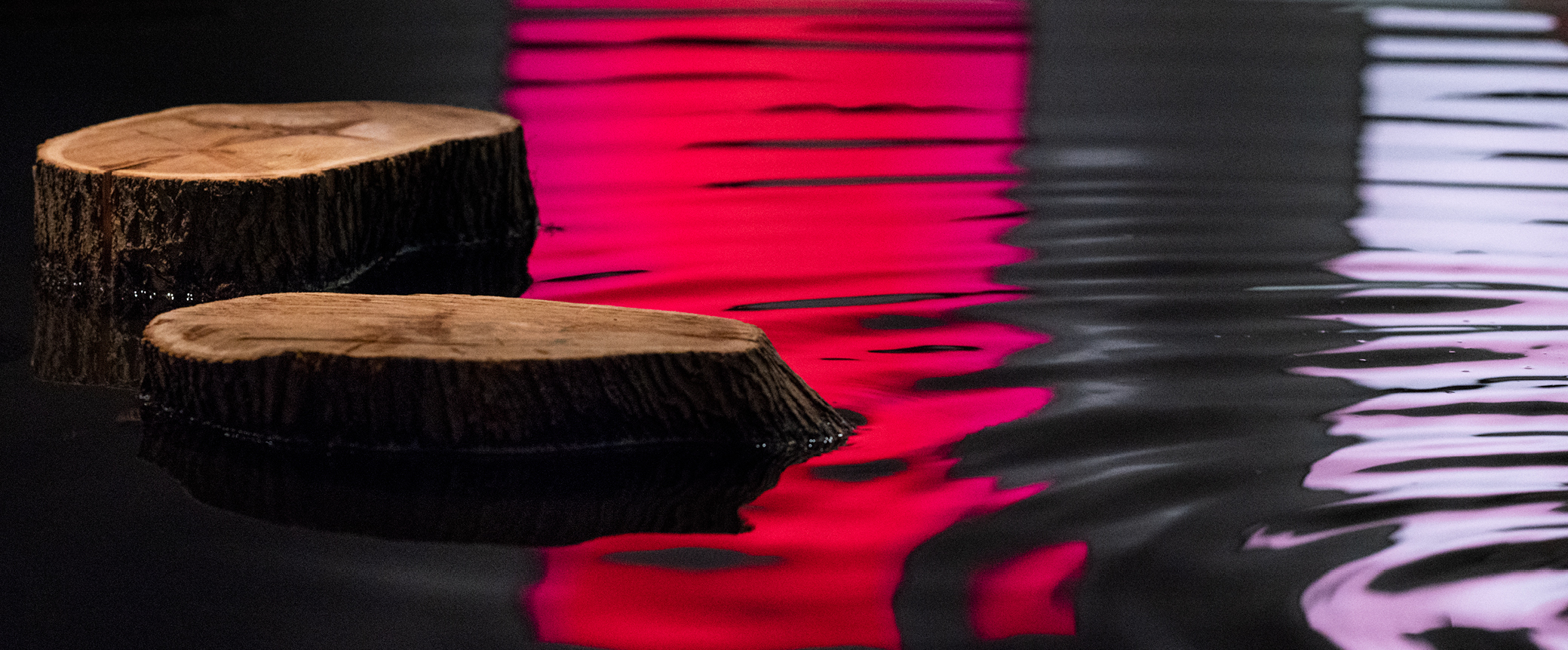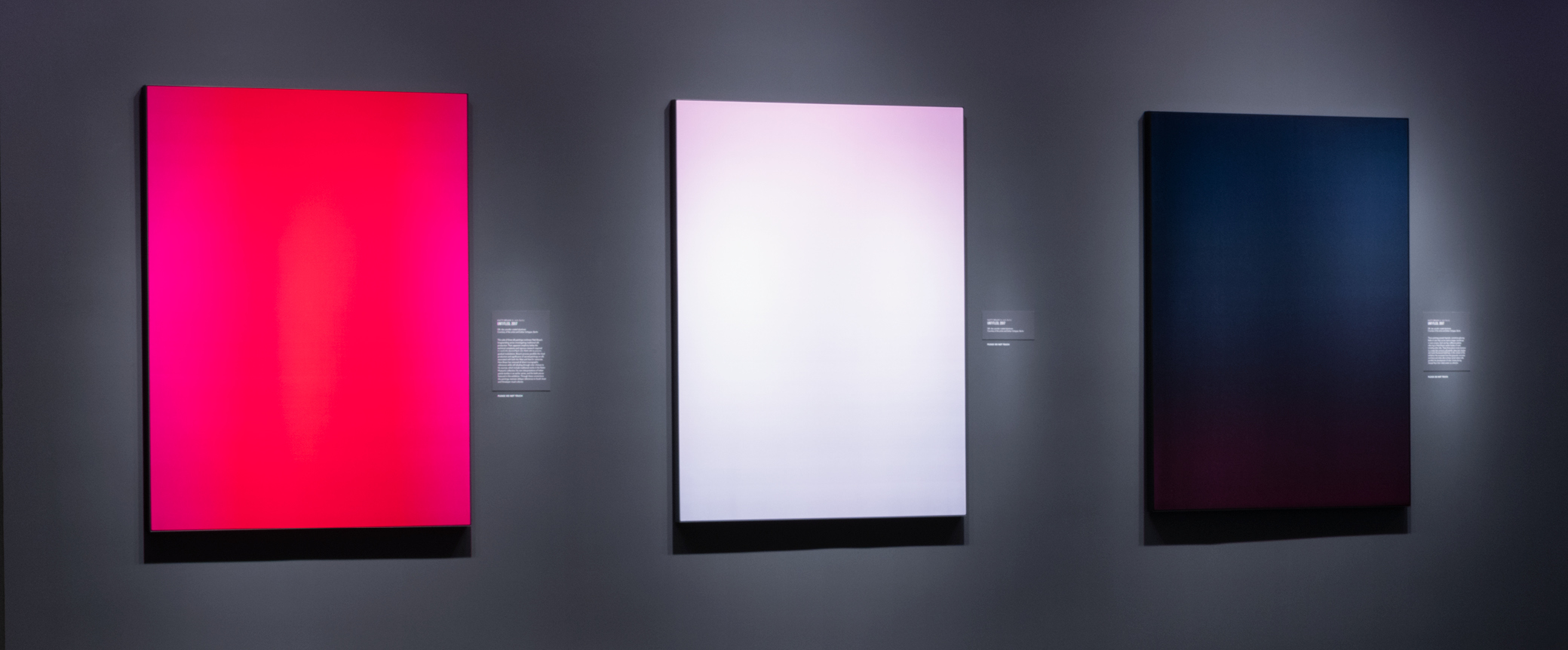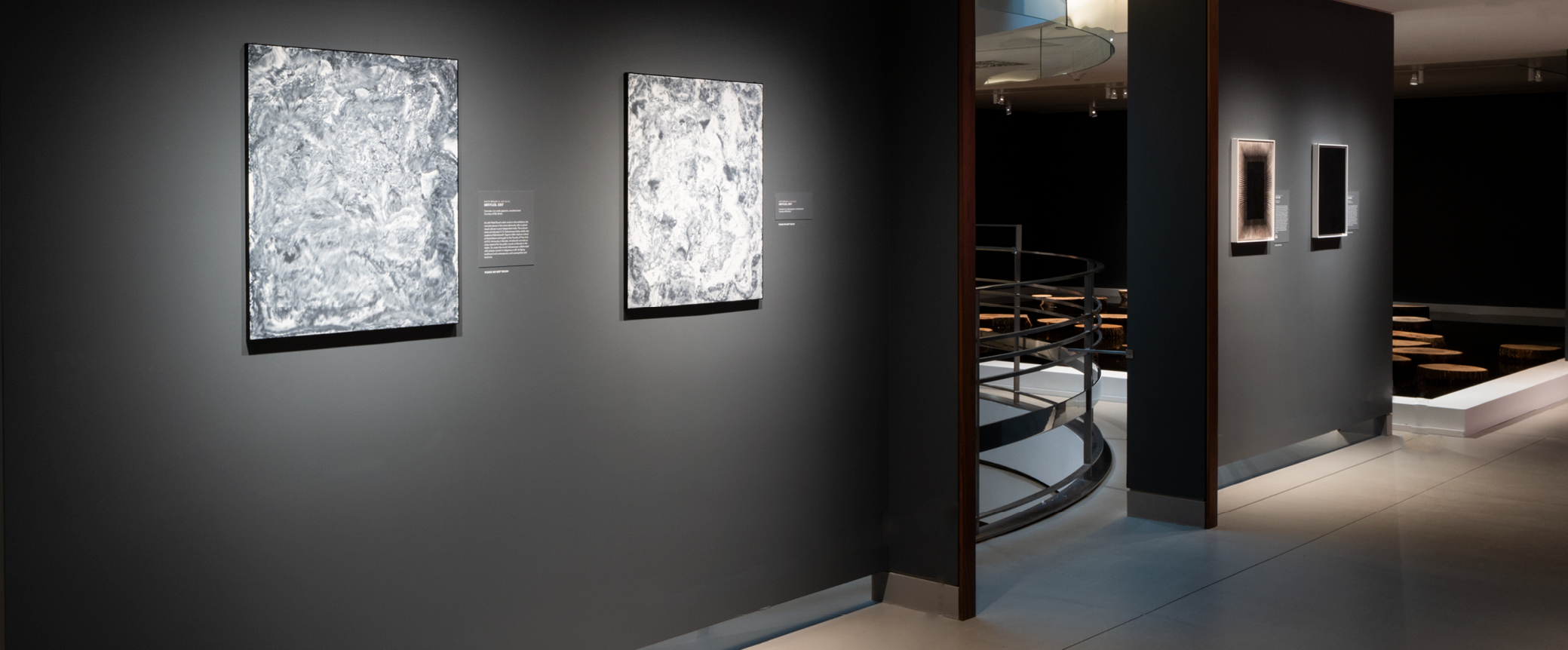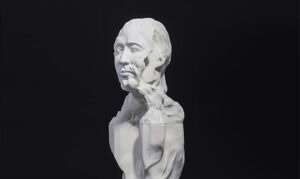
In The Otolith Group’s transtemporal consideration of modernity in urban India, the narrator questions, “Why do Indian artists produce so little science fiction?” The reply: “Satyajit Ray’s film The Alien would have rendered this question void. It is this emptiness that allows a nostalgia for a lost future.”
The three-part exhibition A Lost Future challenges existing histories and speculative futures across cultures and in Bengal—a culturally rich region divided between present-day India and Bangladesh. The three contemporary artists featured in the exhibition—Shezad Dawood, The Otolith Group, and Matti Braun—engage an evocative range of mediums that spans virtual reality to an immersive lake along with painting, film, sculpture, and photography. Through rich storytelling, A Lost Future explores themes of virtuality, modernity, and world-making in ways that are universal as well as interconnected and specific to this region.
A Lost Future presents still works by all three artists throughout the run, while the central cove will rotate to highlight each one individually.
A Lost Future: Matti Braun (October 5, 2018″“February 4, 2019) transforms the central gallery into an immersive lake that visitors can traverse via a series of tree discs. R.T./ S.R./V.S. (2003″“present) references the lotus pond in the first scene of Ray’s screenplay for The Alien, in which a friendly, catalytic alien from another time and place lands in a small village in Bengal.
For nearly 15 years Matti Braun has researched topics related to the science fiction screenplay The Alien by Bengali filmmaker Satyajit Ray (1921″“1992). Though the film was never made, Ray’s script circulated around Hollywood in the late 1960s, drawing such prominent figures as Marlon Brando, Peter Sellers, and Arthur C. Clarke into this legendary episode in cinematic history. Braun’s inquiries on this subject focus on real and imagined histories of post-independent India, especially ones centered on the pioneering physicist Vikram Sarabhai (1919″“1971) and Nobel Laureate Rabindranath Tagore (1861″“1941). Ray, Sarabhai, and Tagore are united in the title R.T./S.R./V.S., with their initials also referencing the likely co-option of The Alien by Steven Spielberg’s E.T.
The tree discs placed across the installation are made from local but non-native species, in this case white mulberry and Norway maple, emphasizing how both objects and people can become alien in their displacement to another location. In walking across the pond, visitors metaphorically embody Ray’s alien, reinforcing the contingent nature of identity, particularly in our contemporary climate. R.T./S.R./V.S. is remade episodically in different spaces, visualizing the lost future of Ray’s unmade film.
Guidelines for R.T./S.R./V.S.
- Do not drop objects, touch, or walk in the water.
- Flat footwear is recommended.
- No jumping or standing on one foot.
- All children must be accompanied by an adult.
- There is no stroller or wheelchair access.
- Visitors with mobility issues who are unable to maneuver the space on their own should be accompanied by a care partner.
- The Rubin Museum is not responsible for items lost or damaged in the water.
Past:
A Lost Future: The Otolith Group (June 1″“September 17, 2018) presented O Horizon, a newly completed film, which focuses on Visva Bharati, an art school at Santiniketan founded by Nobel laureate Rabindranath Tagore, the cosmopolitan polymath who shaped Indian art, literature, music, and education. Filmed, recorded, and researched over five years in West Bengal, India, O Horizon stages moments from Tagore’s extensive environmental pedagogy as a series of portraits, moods, studies, and sketches that allude to what might be described as the outlines of a “Tagorean cosmopolitics.”
O Horizon draws on the modernist theories and practices of dance and song developed by Tagore as well as the experimental theories and practices of mural, sculpture, painting, and drawing developed by critical figures such as K.G. Subramanyan, Benode Behari Mukherjee, Nandalal Bose, and Ramkinkar Baij, whose work shaped the ethos of generations of Indian modernists. Featuring Santiniketan, Sriniketan, and surrounding areas of Birbhum, West Bengal, O Horizon draws together dance, song, music, and recital, evoking the Tagorean imagination for the 21st century.
A selection of earlier films, including their “premake” of Ray’s unmade film The Alien, titled Otolith III (2009), were screened in the Rubin Museum theater on select dates.
A Lost Future: Shezad Dawood (February 23″“May 21, 2018) featured an interactive virtual reality experience of the Indian hill station Kalimpong, linking a haunting nostalgic portal to a future alternative reality. Expanding on some of the sites and stories in Dawood’s paintings and sculptures on view, the virtual reality work allows visitors to travel from the mythic Himalayan Hotel into the mountains, an adjacent monastery, and beyond.

Curated by Beth Citron.
The exhibition will be accompanied by an audio tour, public programming, and a publication in fall 2018 documenting all three rotations of the exhibition.
A Lost Future: Shezad Dawood/The Otolith Group/Matti Braun is supported by Rasika and Girish Reddy, and by public funds from the New York City Department of Cultural Affairs in partnership with the City Council. Additional support has been provided by Amita and Purnendu Chatterjee, Akhoury Foundation, and contributors to the 2018 Exhibitions Fund. Trees donated to the installation R.T./S.R./V.S. by the New York City Department of Parks and Recreation.

Artwork captions
Matti Braun (b. 1968. Berlin); R.T./S.R./V.S.; 2003″“2018; white mulberry and Norway maple tree discs, pond, water; courtesy of the artist and Esther Schipper, Berlin; Photographs by Nicholas Calcott
Matti Braun (b. 1968, Berlin); Untitled; 2017; silk, dye, powder-coated aluminum; 51.42 x 39.61 x 1.38 in. (130.6 x 100.6 x 3.5 cm); courtesy of the artist and Esther Schipper, Berlin; image courtesy the artist and Esther Schipper; photo © Lothar Schnepf
Matti Braun (b. 1968, Berlin); Untitled; 2017; silk, dye, powder-coated aluminum; 51.42 x 39.61 x 1.38 in. (130.6 x 100.6 x 3.5 cm); courtesy of the artist and Esther Schipper, Berlin; image courtesy the artist and Esther Schipper, Berlin; photo © Lothar Schnepf
Matti Braun (b. 1968, Berlin); Untitled; 2017; silk, dye, powder-coated aluminum; 51.42 x 39.61 x 1.38 in. (130.6 x 100.6 cm x 3.5 cm); courtesy of the artist and Esther Schipper, Berlin; image courtesy the artist and Esther Schipper, Berlin; photo © Lothar Schnepf
A LOST FUTURE: MATTI BRAUN INSTALLATION TIME-LAPSE
Plan your visit
The Matti Braun lake installation on the 5th floor will be closed on Monday, December 24 and Monday, December 31, 2018.

